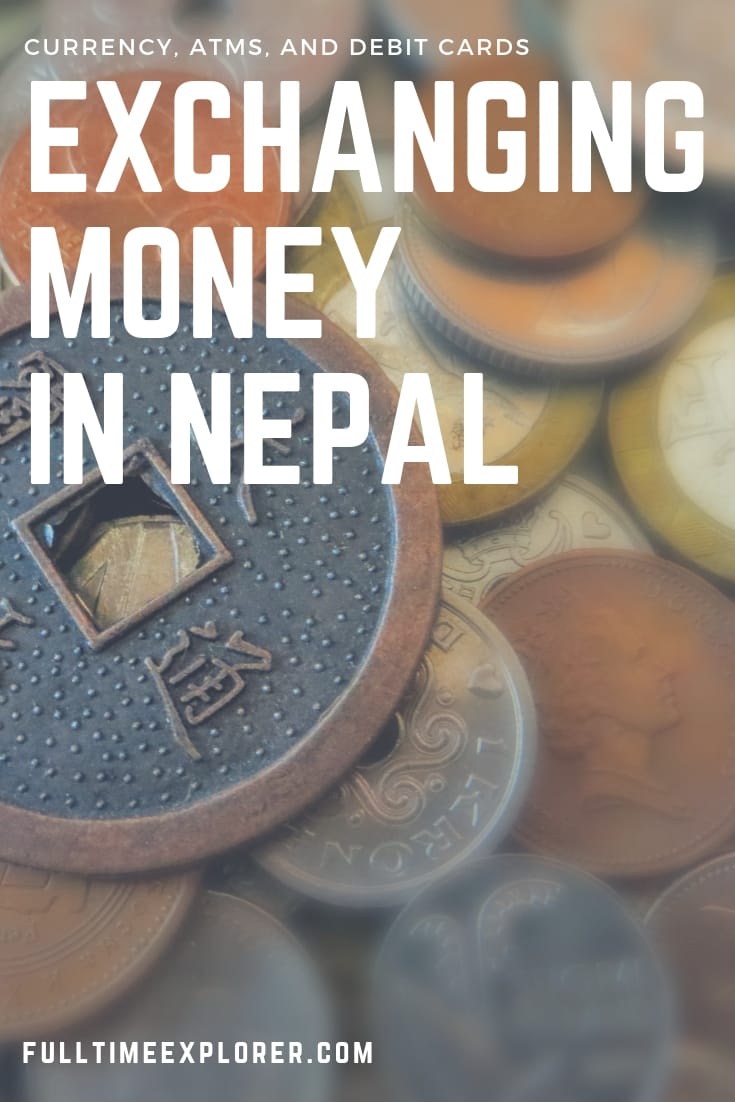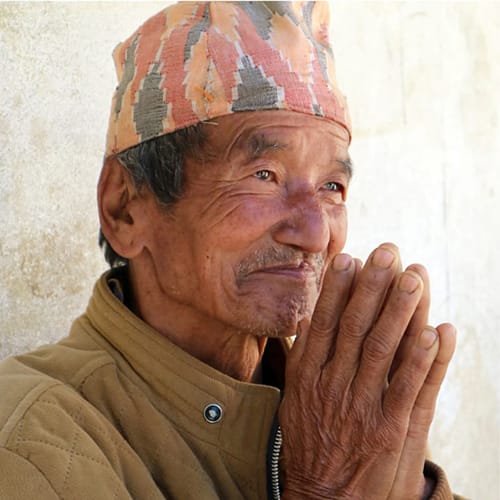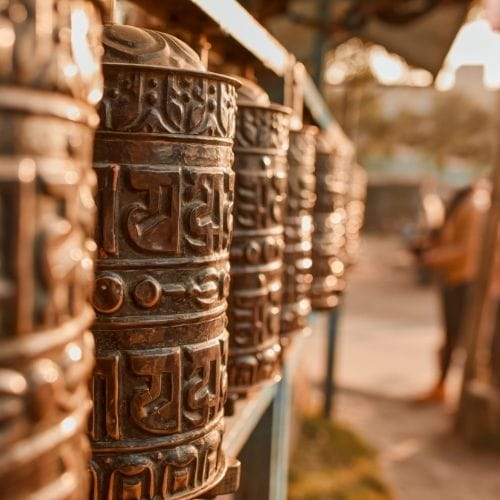Having spent a lot of time in foreign countries, handling money seems like a no brainer. But, when I think back to my first real trip, I remember having no idea where to start. Should I exchange money in Nepal? Use a credit card? Do ATMs even exist there? A lot of people have asked me how I handle money while living in Nepal. Most believe that I’m walking around with thousands of dollars on me. Where they think I’m hiding that kind of stash, I’m not really sure. Despite popular belief, I do not walk around with wads of cash in my pockets. So, how do I spend months at a time traveling without running out of money?
Tips to Exchange Money in Nepal
This used to be the most common form of accessing money in a foreign country. You’d arrive with a set amount of cash on you, and once you ran out, you were…how do we say…screwed. I find this highly unsettling. Nepal is safe, but imagine if you did get robbed. You’d be stranded, trying to convince your family that the request for a Western Union money transfer is not a scam. The only time I exchange money in Nepal is when I first arrive at the airport. I exchange enough money to get a cab and pay my hotel for the first night. That’s usually $30. I also keep an emergency stash of USD with me. I like to have $100 in fives and ones.
Nepal’s currency: Nepalese Rupee (NPR)
Pristine Money
I’m going to make a big deal of this right off the bat because if you plan to exchange money in Nepal this IS VERY IMPORTANT. Your money must be pristine. This applies to foreign currency (not Nepalese rupees). Your bills cannot have ANY tears, stains, rips, tape holding it together, etc. It should not be creased (I fold mine lightly in half to fit it in my wallet but do not press down on it. If your money does not look perfect, they WILL REFUSE TO EXCHANGE IT. No joke. It’s basically as worthless as toilet paper. Come to think of it, toilet paper might be worth more.
Exchange Rates
I don’t love to exchange money in Nepal because I find the exchange rate can fluctuate depending on the area you are in. For instance, Pokhara often has a different exchange rate than Kathmandu. Therefore, you might want to ask around about the exchange rate before switching locations.
Accepted Currencies
Not every currency can be exchanged into Nepalese rupee. I learned this the hard way when I showed up with $20 worth of Indonesian rupiah that I forgot to exchange back to USD. Despite being fairly close in proximity, both being part of Asia, having direct flights between the countries, and both being called rupees, they are not accepted for exchange in Nepal. I also had this problem with Burmese kyat. It’s best to have a major currency with you.
List of currencies that can be exchanged in Nepal (usually):
United States Dollar, British Pounds, Euro, Swiss Franc, Australian Dollar, Canadian Dollar, Singapore Dollar, Japanese Yen, Hong Kong Dollar, Danish Krone, Swedish Krona, Saudi Riyal, Qatari Rial, United Arab Emirates Dirham, Thai Baht, Malaysian Ringgit, Chinese Yuan, South Korean Won
Using ATMs in Nepal
This is the secret to long term travel almost anywhere. I don’t have to carry a ton of cash because I can easily take money out as I go. Something that surprised me was how ATMs are almost everywhere. You can be in a developing country in the middle of nowhere and chances are, there’s still an ATM somewhere nearby. It’s astounding. Not much surprises me about the world these days, but this actually caught me off guard.
ATM Fees
ATM fees in Nepal can be insanely steep, and there are maximum withdrawals. For instance, the ATM fee might be $5 per transaction. Therefore, I recommend you to take out the maximum amount to avoid paying the fee over and over again. Usually, you can take out 25,000 rupees (around $225 USD) at a time. This will last me about 10 days in Nepal, so I only have to pay $20 a month at most to use an ATM. This is if your debit card doesn’t reimburse you for foreign transaction fees. Mine does reimburse me, so I don’t actually pay anything to use ATMS. I’ll talk more about that below.
Credit Card Fees
On top of the ATM fee, your debit card might also charge a fee. For instance, one of my debit cards charges $5 to be used in another banks ATM. Therefore, I’d have to pay the ATM $5 and the bank $5 to take out $225. This is my backup debit card, so I only use it in emergencies.
Reliability of ATMs
Nepal is not exactly famous for its reliability of things working properly. I find this endearing most of the time, but it’s not great when you’re desperate for cash and the ATM is broken. In major cities, you’ll see “ATM Lounges” which will be a small room with about 5-10 different ATM machines. Usually, only one is working. Often, there’s a security guard there to make sure no funny business is taking place. I always ask him which ATM is working to save myself the time of trying every machine.
There are two famous ATM machines along the major trekking routes. The ATM in Jomsom is great if you’re doing the Annapurna Circuit and the ATM in Namche Bazaar is helpful for trekkers in the Everest Region. The problem is that they don’t always work, so you shouldn’t rely on them. You can ask people in the Nepal Backpackers Club if anyone has used them recently. The Facebook group is a great resource for time sensitive questions.
ATM Scams
ATM skimming is a problem in Nepal. I’ve had my credit card number stolen twice during the seven months I was in the country. I can’t say for sure whether it was from an ATM, an online purchase using WiFi, etc. but, I highly recommend having a backup debit card. I keep mine with my passport and spare money. I do not carry it around with me. That way, if one gets lost or stolen, the other one is not in the same wallet.
In addition, I highly recommend getting a VPN (virtual private network). After having my credit card number stolen twice, I wasn’t taking any more chances. The VPN makes it so that you can use a public network (wifi, data, etc) while still looking up sensitive information. Basically, it protects you from having information on your computer/phone stollen. I use ExpressVPN and pay about $12 a month. It’s super easy to use and makes me feel at ease since I’m constantly using my bank apps on my phone.
The Best Debit & Credit Cards for Travel
Charles Schwab – Debit Card
If you’re American, the most obvious choice for a debit card is through Charles Schwab. They reimburse all foreign transaction fees. The card also works in almost every country. I know my Chase debit card does not work everywhere in Asia. This is my number one card for withdrawing money abroad.
Venture – Capital One Credit Card
I also carry a Venture One credit card. Most places in Nepal don’t accept credit cards or they charge an extra fee, but I do try to use it whenever possible. That way, I can rack up points to use on flights and hotels. I also like to have two credit cards (one on me, and one kept somewhere safe) in case of an emergency. It’s possible that you won’t be able to access cash at some point, and if you really have to, you can find an upscale hotel that takes credit cards. I like that the Venture card is meant for travel, so you won’t get fraud alerts every time you switch to a new country. There’s also no need to call in advance to tell them where you’ll be going. I saved up enough points that all of my flights in my first year were free! Even my mom is flying round trip to Nepal this year using points. If you want to sign up for a Capital One card feel free to use my referral code as Capital One sometimes has special sign up offers going on!
Using USD in Nepal
I mentioned earlier that I always keep about $100 in USD. This is my backup money in case my debit card gets stolen, or the ATMs are down. Again, your money must be in near perfect condition. The reason I carry singles and five dollar bills is because you can actually pay with USD if you need to. Say the ATM at the airport doesn’t work and you need to get a taxi to your hotel. You can pay the driver in USD. This happened to me and it was a lifesaver. I gave him $7 USD instead of 700 rupee and was able to go to the ATM once I checked into my hotel.
Money Etiquette in Nepal
I want to add a little note to this post about money etiquette. As an American, this was hard for me to adjust to. In the U.S. we simply hand someone money. If you would like to be respectful while in Nepal, it’s important to always hand someone money (or anything for that matter) with YOUR RIGHT HAND. In Nepal, toilet paper is not always used. People wipe themselves with their left hand. Handing money with your left hand is an insult. It’s the equivalent of saying, “I wipe my a** with this money.” That being said, locals understand that tourists do not mean it this way, so don’t fret if you do it wrong. It will be greatly appreciated if you do it the correct way.
Will you exchange money in Nepal or use an ATM? Feel free to ask any questions!
You might also like…

Michelle Della Giovanna
Writer at Full Time Explorer
I’m just your average New Yorker who quit her job in the fashion industry to explore the world. Come find out what it’s like to trade in five-inch heels for squat toilets.




Of course, there are ATMs out there in Nepal where citizens use them on daily basis. For the foreign tourists they may find it easy to withdraw money or exchange their money into real financial value without any issues and interruptions.
Great article. I’d also suggest a good tip on money inNepal. ATMs are a good way of getting cash and you can use apps like ATM Fee Saver – it helps finding the fee-free and lower fee ATMs in the region along with withdrawal limits for foreign card holders. worth adding to your list of tricks!
Thanks for the tip!